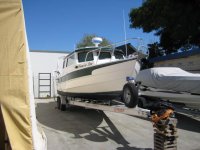Donald Tyson
Member
- Joined
- Jul 24, 2023
- Messages
- 672
- Reaction score
- 8
How do you feel about towing the trailer for a 22 or 25 while the trailer is empty, especially when the trip is a couple hundred miles? I had an inexpensive trailer under my Mac 25 and it sort of shook itself apart slowly.....The wooden bunks were tha problem.
In this scenario a tag team would drop us and then return home with the trailer empty. Is this done much?
Don
In this scenario a tag team would drop us and then return home with the trailer empty. Is this done much?
Don

